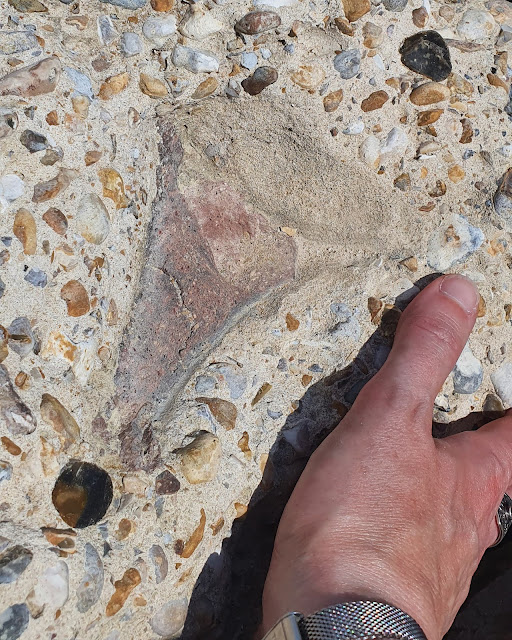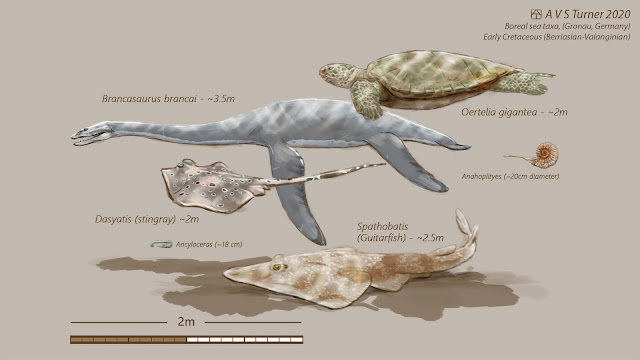Dino-tours: The Sedgewick Museum, Cambridge
Since I was in Cambridge for the e-Luminate festival last
week, I couldn’t leave town without first popping my head around the door of
the Sedgewick Museum of Natural History. This collection forms part of the
University’s Natural Sciences department and is positioned opposite the Museum
of Anthropology and Archaeology (which sadly I did not have time to visit, but
would like to snoop around someday).
For a small museum, the Sedgewick is very well stocked and I
could easily have spent a whole day there and still have left feeling that I
had not quite seen everything. Upon entry the visitor is greeted by a familiar
face to those of us who like spending time in such places – a copy of one of
the famous Bernissart Iguanodon specimens that seem to
find their way everywhere! The layout of the museum is “reassuringly
old-fashioned”; with forests of wood & glass cabinets displaying a plethora
of fossils from huge ammonites to tiny bivalves and brachiopods and any number
of disembodied vertebrae and digits from larger specimens.
Despite the lovely Victorian layout, the Sedgewick also has
a lively modern edge lent from some more recent displays including an
impressive articulated Plesiosaur specimen and some very fetching models of
Pterosaurs, Dinosaurs and some early fish species. Whilst the Iguanodon
sentinel by the door is by far the largest specimen on display, there are some
other big show-stoppers of note: a very nice cast of a Tyrannosaurus skull will
keep the kids (present company included!) happy, and two lovely mounted skeletons
of a Hippopotamus and a Megaceros (Irish Elk) are also very impressive.
Whilst I will probably not be rushing back again for a
repeat visit, the Sedgewick is a very nice place to while away an afternoon.
And, like I say, you could very easily spend the whole day there if you wanted
to take in everything that there is to see.
The only downsides that struck me to the Sedgewick were
firstly the lack of interactive and more child-friendly exhibits. There are
some kids who will be perfectly happy just looking at fossils, but most and
particularly younger visitors may get bored quite quickly. The only other
downside was the seeming lack of temporary exhibits (which may just be down to
restrictions on the space: they have crammed a LOT of stuff into a tiny
building!). This is one of the reasons why I feel a repeat visit may not be on
the cards for me.
On the plus side though, I found the restrictions on space
to be more of an advantage in my case because I like small museums where I can
take in a lot of information without having to feel like I’ve walked for miles
by the end of it! I also like the open layout that enables the visitor to simply wander around looking at what interests them, rather than being led through a very prescriptive journey (if your thing is Palaeozoic mammals, you don't want to have to walk through the whole Palaeozoic and Mesozoic areas in order to get to them. That's a lotta invertebrates!). The building is light and airy and not in the least bit
stuffy (sometimes an issue with Victorian-style displays). The range of
specimens on display is remarkable and the modern elements sit very well with
their more venerable neighbours.
I would thoroughly recommend anyone planning to spend any time in
Cambridge to pay the Sedgewick a visit if you get the chance. If on the other
hand you’re just another palaeo-tourist like me, by all means take the time to
visit for the sake of seeing the museum, but maybe schedule in a few other activities for your weekend as well if
that’s the case (by no means a problem in Cambridge, which is a vibrant city
with plenty to see and do).






Comments
Post a Comment